Abstract
Aerosolized bacteria were recovered up to 930 m downwind of three sewage treatment plants in Jefferson County, Ky. This distance includes homes in the proximity of several hundred such plants in that county. Bacterial counts were elevated on foliage near activated sludge tanks; although these counts decreased rapidly, at 48 h after exposure they were significantly higher than the counts on unexposed leaves. The 50% lethal dose of aerosolized Klebsiella pneumoniae was comparable to the 50% lethal dose of a virulent clinical isolate, and enteric bacteria were recovered from the respiratory organs of mice after forced inhalation adjacent to an aerated sludge tank. The coliform density in the effluents of the plants tested was inversely related to the airborne bacterial load at those plants. This relationship was attributed to the correlation between effluent quality and extent of aeration of activated sludge. Wind direction and distance influenced the airborne counts, but the extreme variation in counts indicates that it is not possible to predict emission rates accurately in an open ecosystem. Airborne enteric bacteria also were isolated near a decorative fountain used by humans for wading. The discovery of these sources of aerosolized microorganisms from polluted waters in densely populated areas suggests that a potential health hazard may be created by the increased probability of inhaling and ingesting microorganisms of fecal origin.
Full text
PDF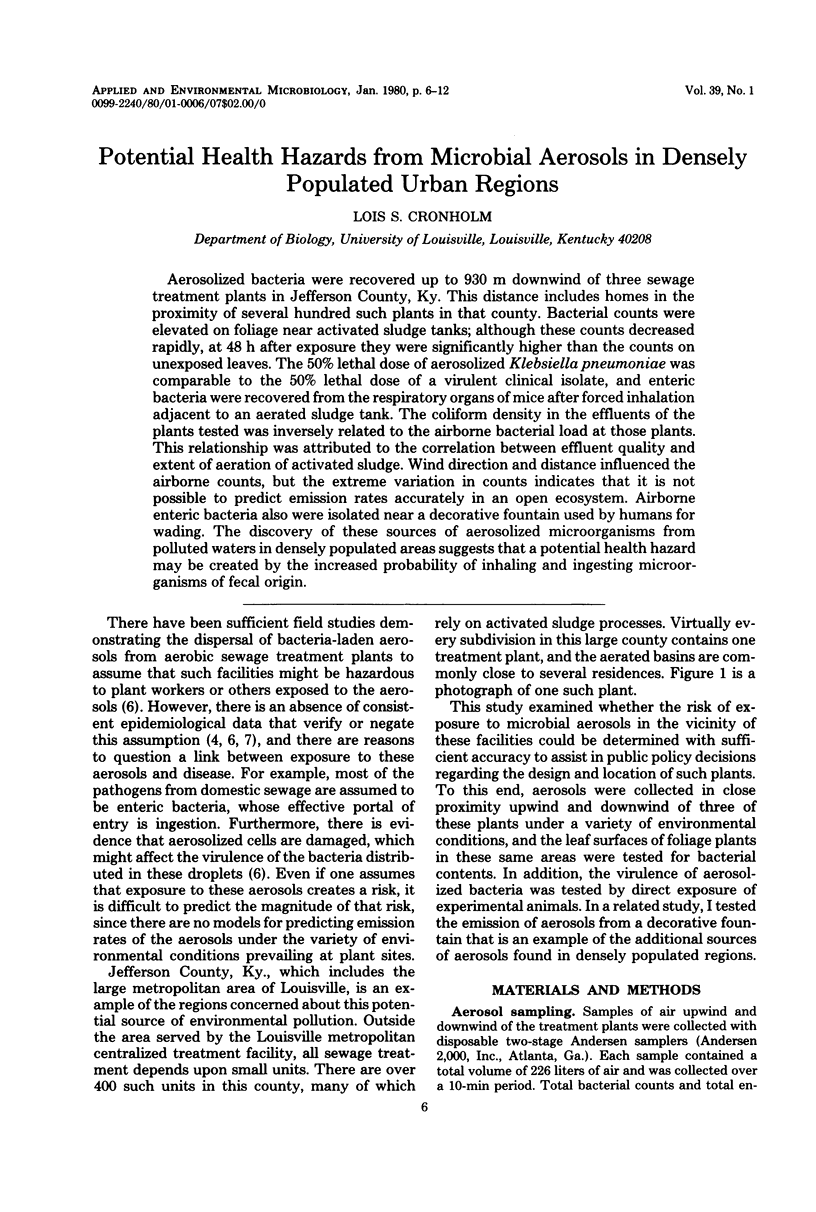
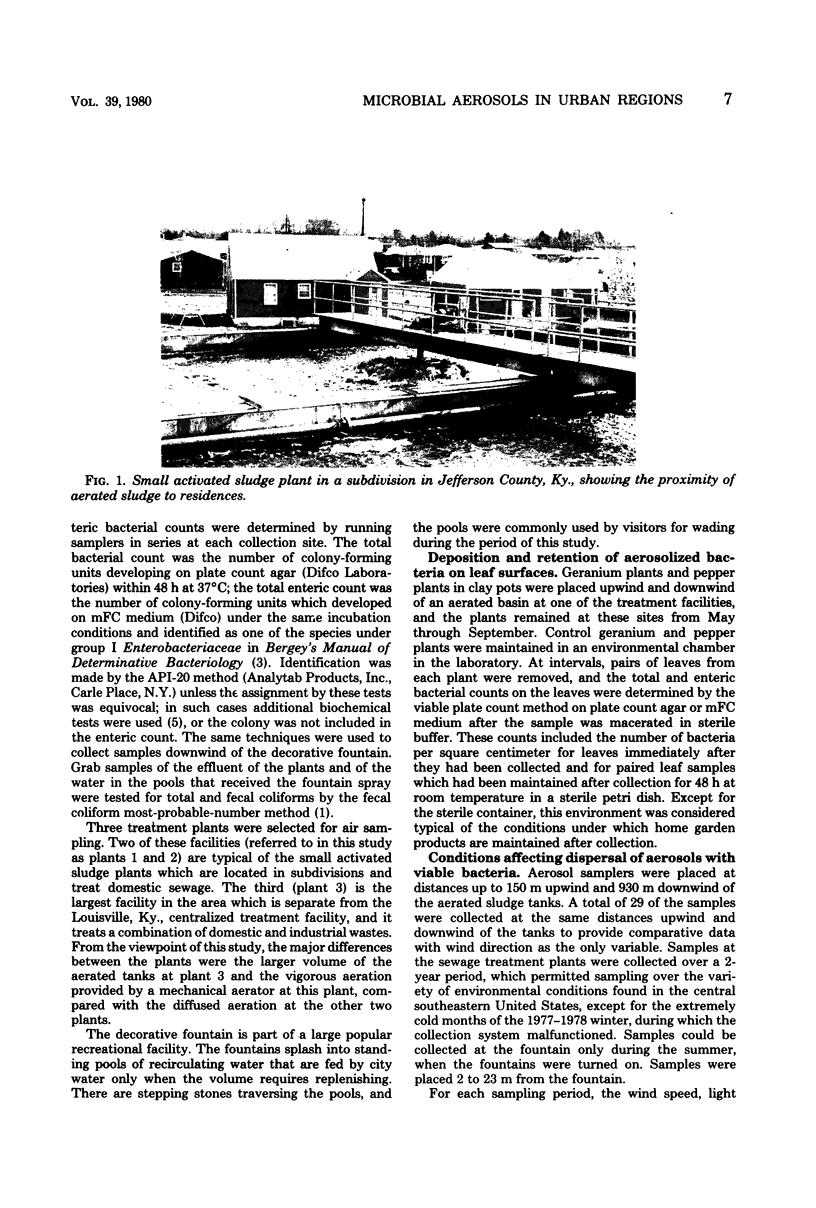

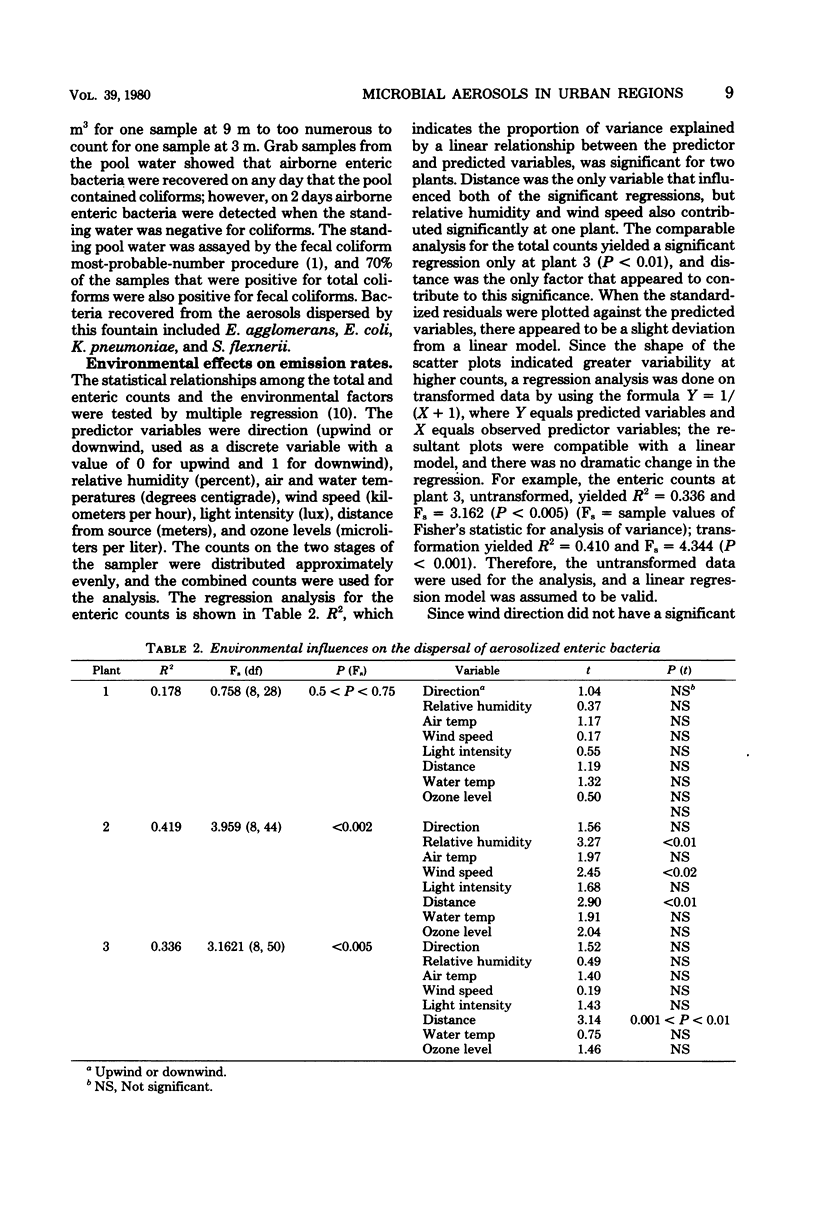
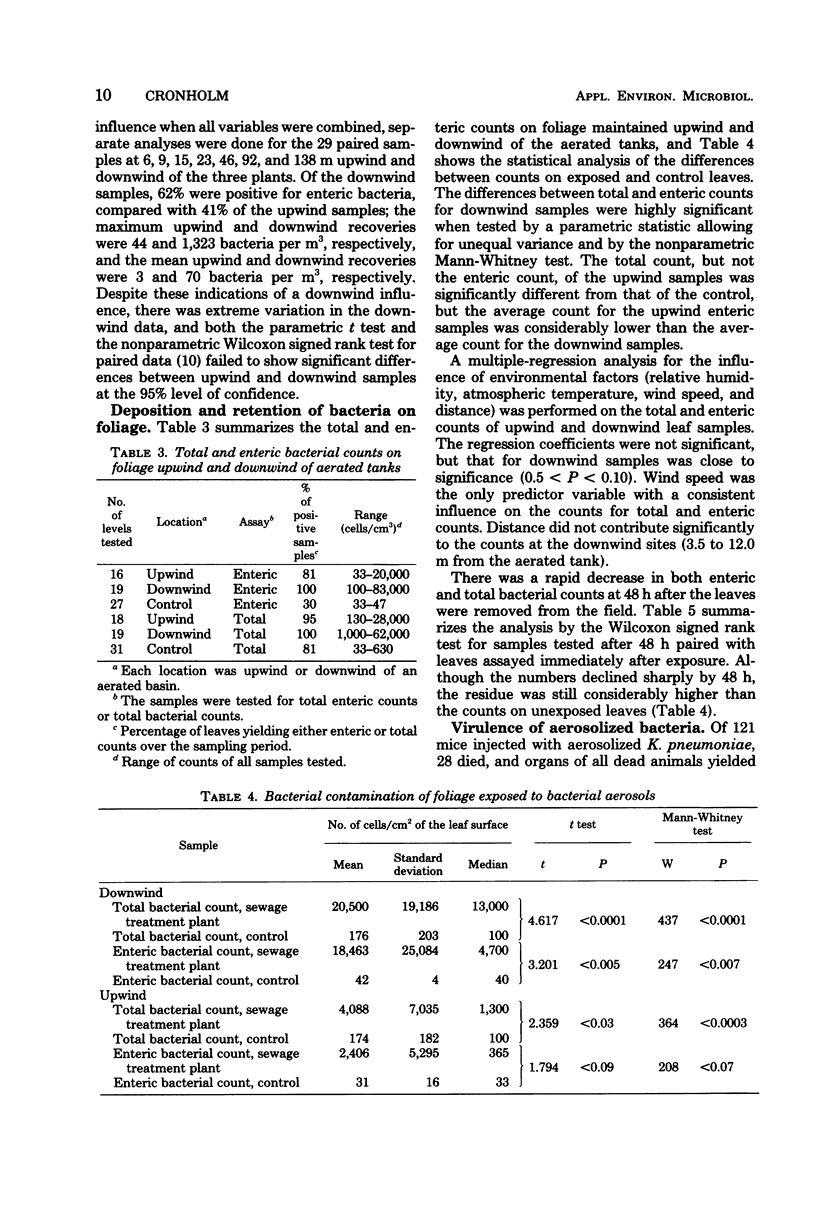
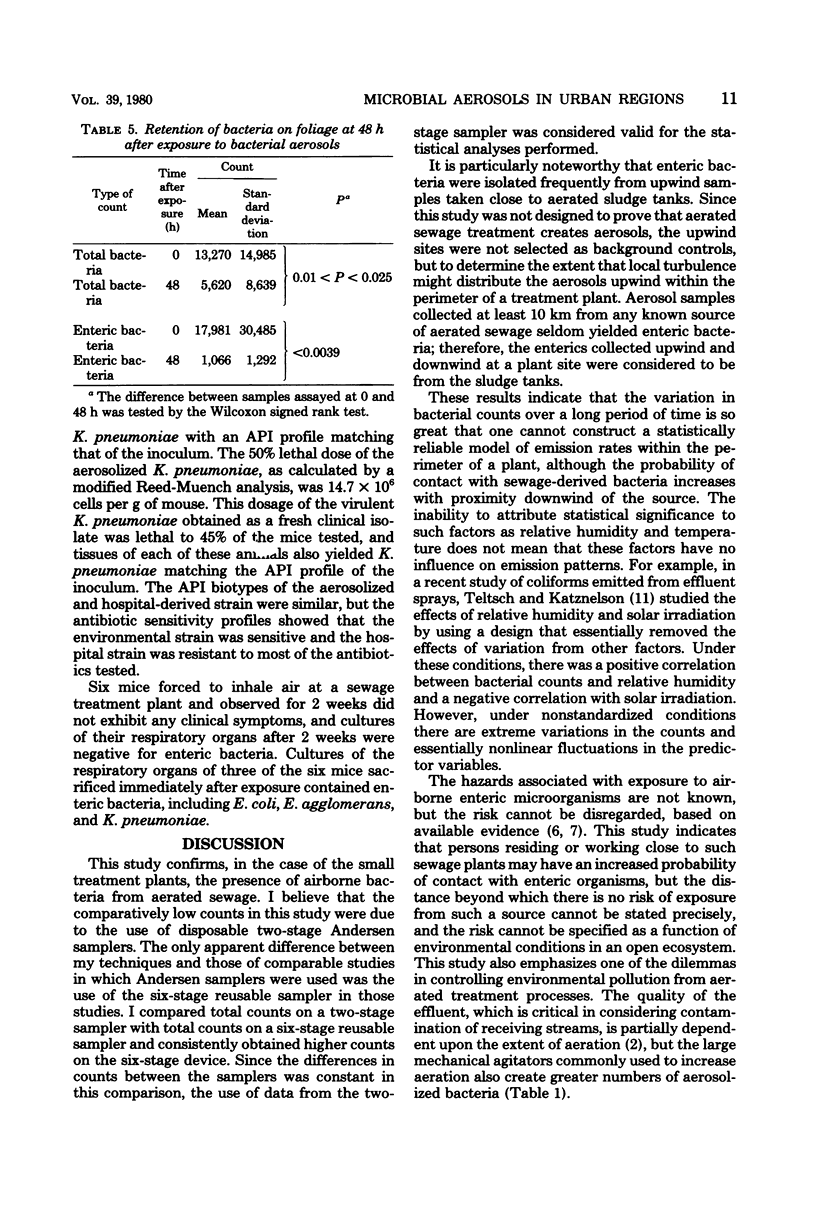
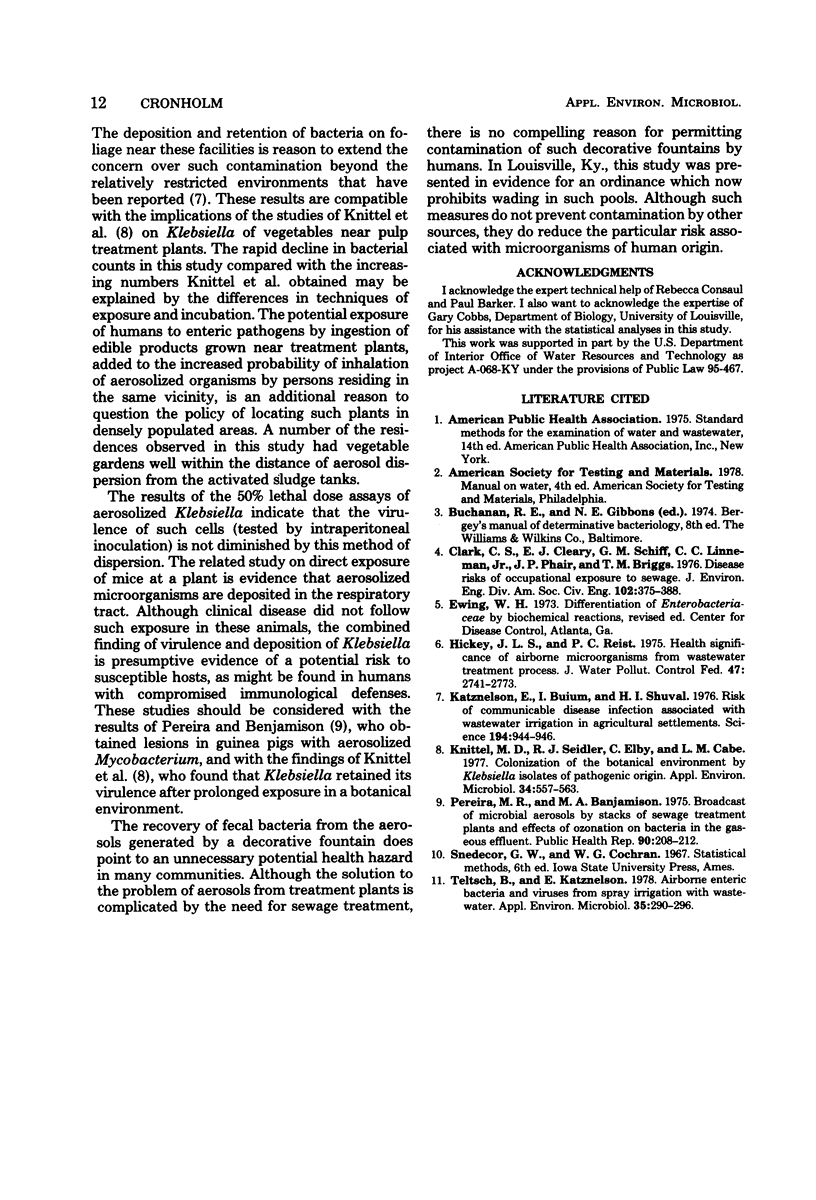
Images in this article
Selected References
These references are in PubMed. This may not be the complete list of references from this article.
- Hickey J. L., Reist P. C. Health significance of airborne microorganisms from wastewater treatment processes. Part II: Health significance and alternatives for action. J Water Pollut Control Fed. 1975 Dec;47(12):2758–2773. [PubMed] [Google Scholar]
- Katzenelson E., Buium I., Shuval H. I. Risk of communicable disease infection associated with wastewater irrigation in agricultural settlements. Science. 1976 Nov 26;194(4268):944–946. doi: 10.1126/science.982051. [DOI] [PubMed] [Google Scholar]
- Knittel M. D., Seidler R. J., Eby C., Cabe L. M. Colonization of the botanical environment by Klebsiella isolates of pathogenic origin. Appl Environ Microbiol. 1977 Nov;34(5):557–563. doi: 10.1128/aem.34.5.557-563.1977. [DOI] [PMC free article] [PubMed] [Google Scholar]
- Pereira M. R., Benjaminson M. A. Broadcast of microbial aerosols by stacks of sewage treatment plants and effects of ozonation on bacteria in the gaseous effluent. Public Health Rep. 1975 May-Jun;90(3):208–212. [PMC free article] [PubMed] [Google Scholar]
- Teltsch B., Katzenelson E. Airborne enteric bacteria and viruses from spray irrigation with wastewater. Appl Environ Microbiol. 1978 Feb;35(2):290–296. doi: 10.1128/aem.35.2.290-296.1978. [DOI] [PMC free article] [PubMed] [Google Scholar]



